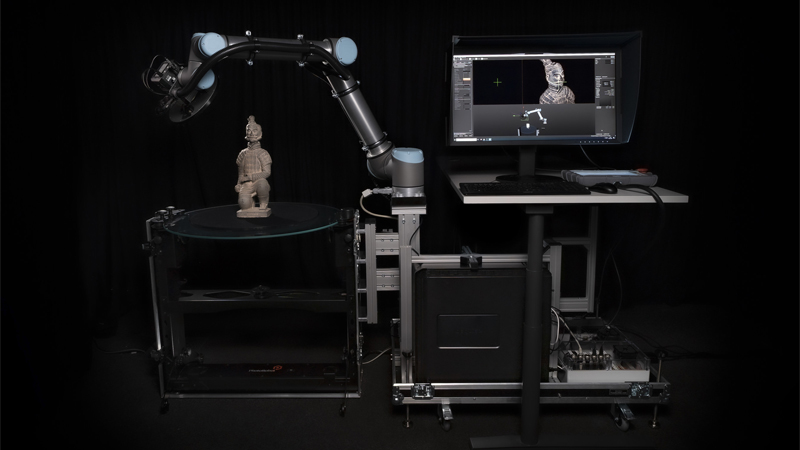|
The CultArm3D has been developed to help museums digitise their collections

Tom Anstey | Planet Attractions | 24 Feb 2021

 CultArm3D can produce a highly-detailed scan of any object at the push of a button Credit: Fraunhofer IGD CultArm3D can produce a highly-detailed scan of any object at the push of a button Credit: Fraunhofer IGD
Fraunhofer IGD - one of the world's leading research institutions for applied visual computing - has developed an automated robotic arm designed to scan cultural objects in 3D.
Called the CultArm3D, the technology has been created to make it easier for museums to digitise their collections. Fraunhofer has partnered with Danish camera manufacturer Phase One on the project, which can deliver precise 3D models of exhibits of various sizes at the push of a button.
Equipped with a Phase One iXG 100-megapixel camera, the arm is controlled through Fraunhofer's autonomous scanning algorithm, using specially-developed ring lights for optimal illumination. The arm will automatically scan objects from every angle, with the end result being a highly detailed, high-quality 3D representation of the artefact.
The completed scan can then be output in various formats, including high-resolution 2D or 3D video, as a 3D model for VR and AR presentations, and as a print file for a 3D printer.
"3D models are tremendously important for research and can help improve our understanding of objects and their origins as well as analyse their attributes,” said Pedro Santos, department head at the Fraunhofer Institute for Computer Graphics Research IGD. “They also serve as the basis for visualisation in virtual and augmented reality, and when using 3D printing, to create true-colour physical replicas.”
Earlier versions of the scanning technology from its development stages are already in use at museums and archives, including the State Museum of Baden in Karlsruhe, the Thuringian University and State Library at Friedrich Schiller University Jena and, soon, the University and State Library Darmstadt. At the State Museum of Baden, the tool has been integrated into the visitor concept, allowing guests to scan museum objects in 3D under supervision and then see the results of their work for themselves on interactive touch tables or with VR glasses.
Technology
|
|






Supplier Showcase 2025: The biggest attractions projects landing worldwide this year
|